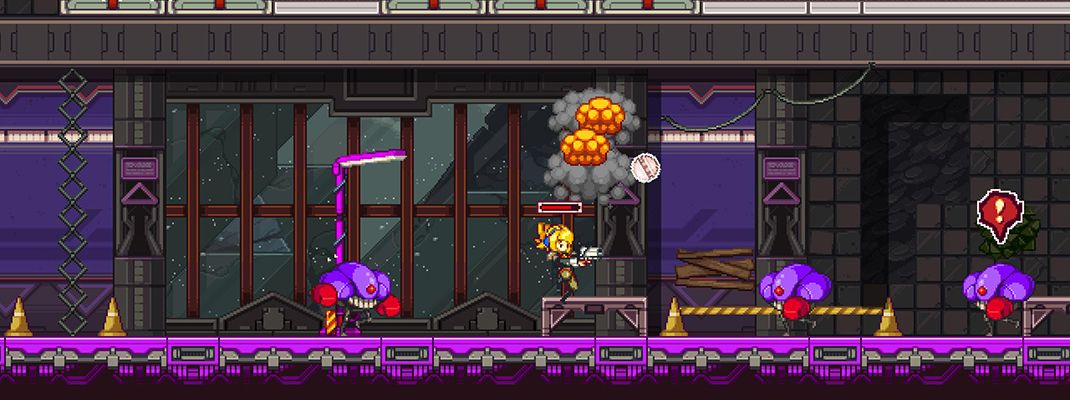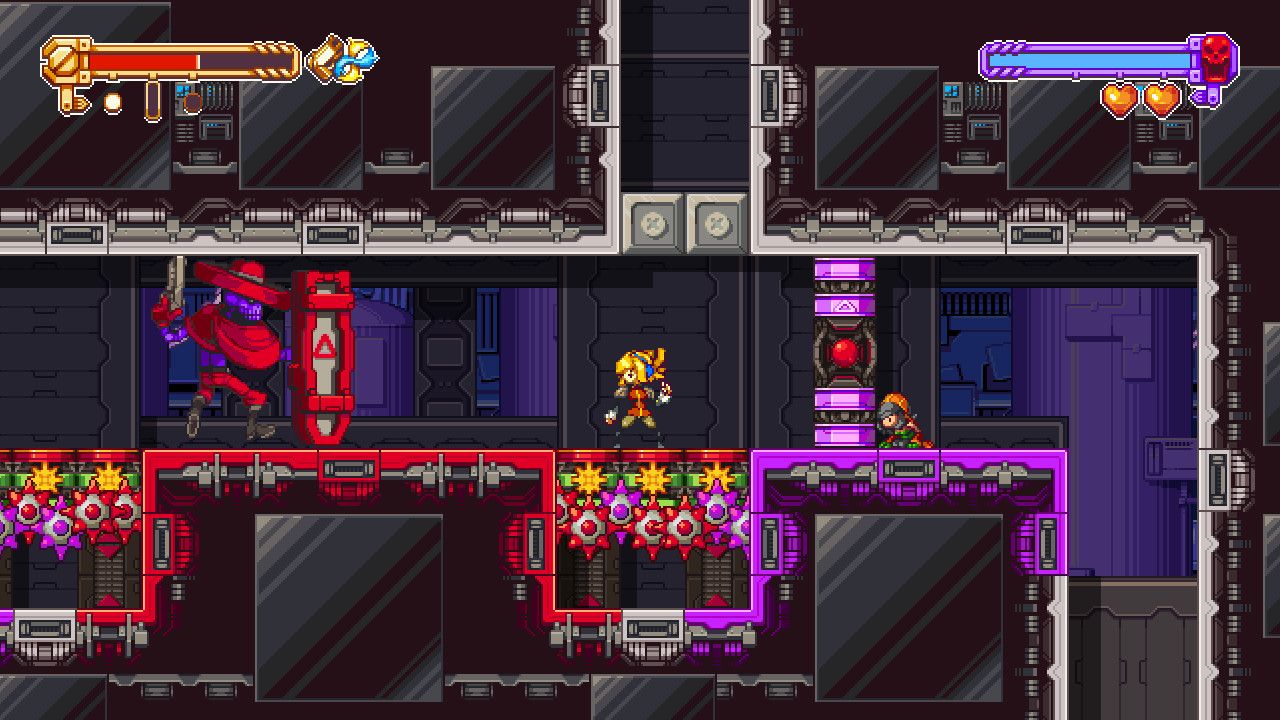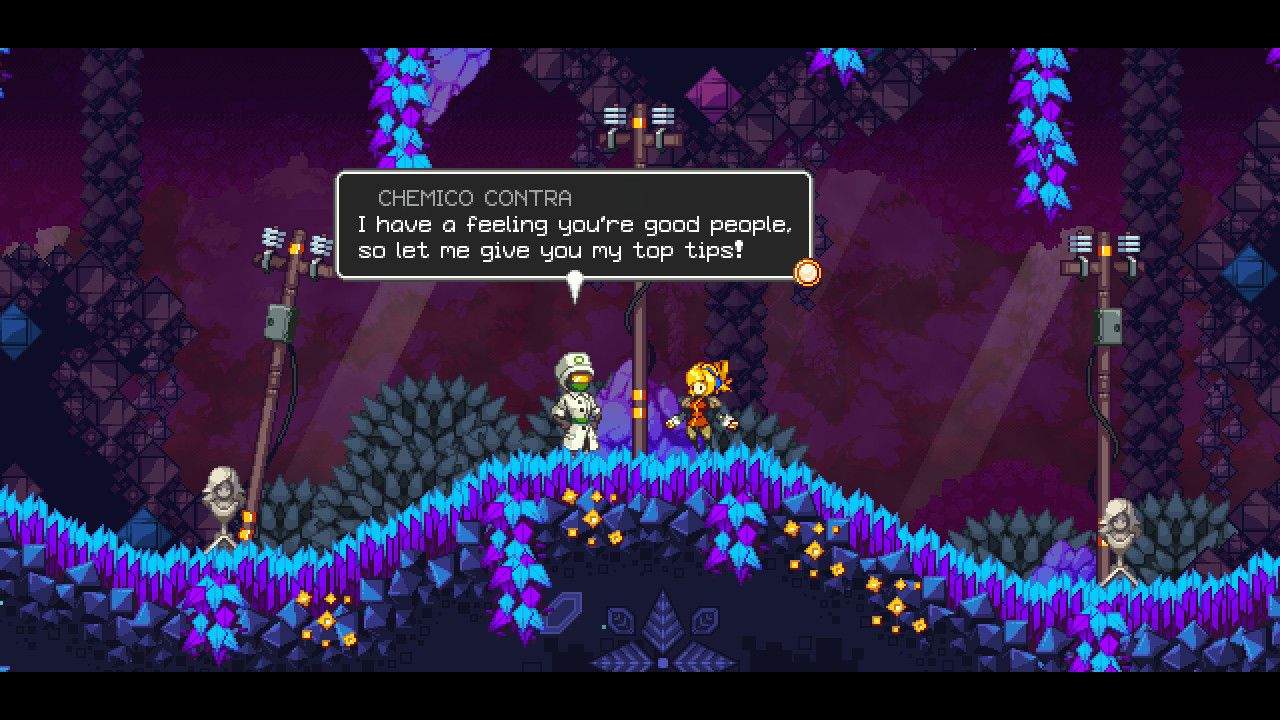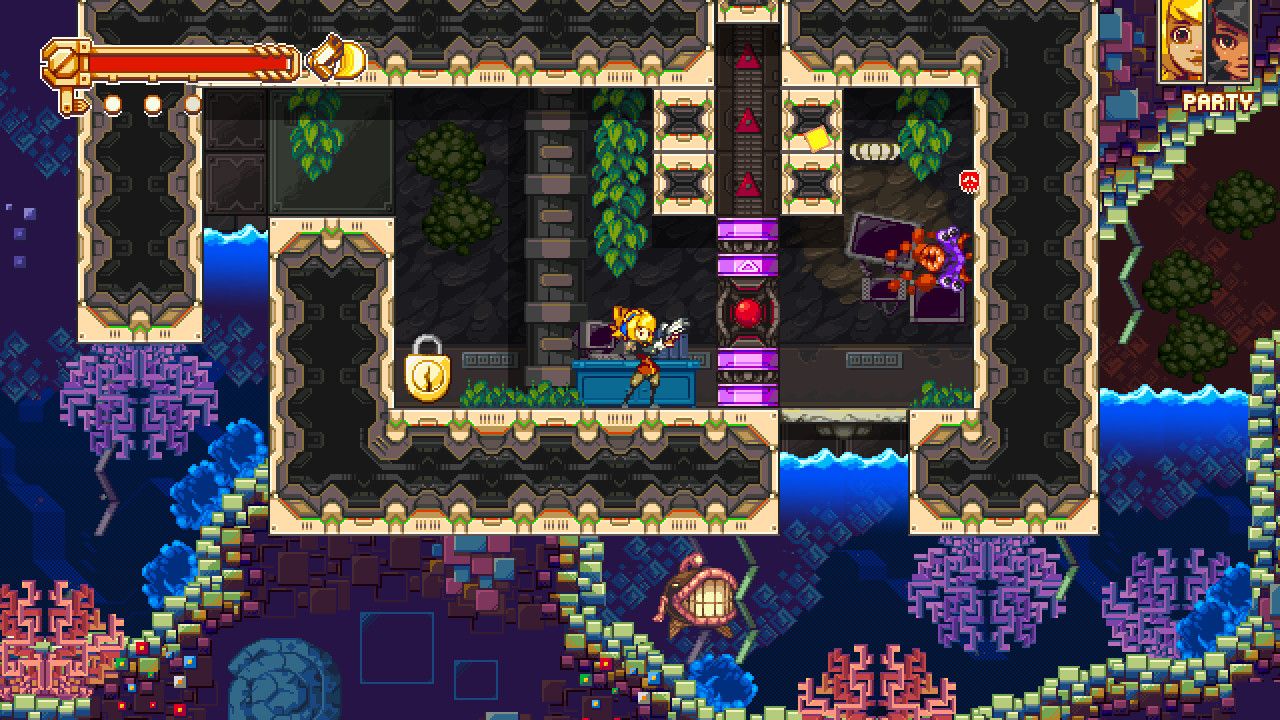There are a couple of ways the world can end, but the long, slow fade-out is one of the messiest. People cling to normality despite each day being just a bit worse than the previous one and the rulers slide into authoritarianism while the justifications for it get less believable as the crackdown takes its toll. Robin's world is run by One Concern under the authority of Mother, and they strictly dictate what jobs and actions are and are not allowed by the people. Fall out of divine favor and face Penance, which involves being locked in one's home as it's torn apart from the inside. That's not a basis for a stable society.
An iconoclast is a religious troublemaker, destroying sacred iconography and bringing everything holy back down to earth. Robin didn't start out to do this and instead just wanted to be a mechanic, helping family and neighbors while wielding a giant wrench. Her father recently died but other than that it's a good life, especially for someone who likes to help people, but One Concern is starting to notice that the machinery in town is requiring fewer calls for the authorized technicians. In the meantime the fuel known as Ivory has been running scarce, the moon is decaying, and the hand of authority is weighing a little bit heavier every day. It's not going to take much for the world's slow decay to snowball to rapid failure, and no matter how cute and helpful a mechanic may be there's no way to avoid some amount of heavy damage to friends, family, and the world on the adventure to put things right.
Which is a lot of narrative weight for a hybrid puzzle/platformer/run & gun shooter to carry, but Iconoclasts does many things at once and frequently at cross-purposes. Cute art carries a story that's dark or tragic as often as it is bouncy and fun, while maybe an hour or so of the twelve-plus minimum play-time is actually cut-scene. The narrative may be the part that sticks in your head long after the game is complete, but the bulk of the time will be spent chasing through Iconoclast's Metroid-style areas shooting creatures and solving puzzles to progress and find extra loot. One of the things that makes Iconoclasts so special is the way it all holds together so well, carried by pixel art and animation that looks like a dream of the future back in the Genesis days.
Iconoclasts hits the ground running, starting with an earthquake waking up Robin and kicking off the adventure. Within the first ten minutes you'll have performed some light platforming, solved a few intro puzzles, shot a pile of wandering critters while learning different movement patterns for each type, fought a mini-boss, headed back to home, and only after that do you get the first cut-scene. While it's all basic intro-level action, complete with the occasional sign to explain certain less-obvious moves like the charge shot, it's more helping-hand than hand-holding. It feels fantastic to have a game respect one's time in that way, making a great first impression that the rest of Iconoclasts lives up to almost constantly.
As the game progresses Robin's world and abilities expand at a steady rate. Her stun-gun gets backed up with the giant wrench, useful for bopping creatures or twisting bolts to open doors and activate machinery. The primary gun is joined by a grenade launcher, and when the wrench earns an electricity upgrade it's also used to charge up the grenades. Combine a charged item that's going to explode in a two seconds with electricity-hungry machinery, platforms that only move when there's an explosion near the hardened metal plate, other machines that need to be hand-cranked by a handy wrench and plenty of other variations on the theme and there are endless puzzles and problems to work out on the way across each area. Iconoclasts starts out feeling like a run & gun shooter, and there's no question that you'll blast a good number of enemies on the way, but its biggest challenges are reserved for figuring out how to clean up all the items in an area.
While there's plenty to find, one of Iconoclasts' biggest problems is that it never quite figures out what to do with it all. The chests contain one of four different types of material, used to creates tweaks for Robin's abilities, but there's more material than things to build with it. Figuring out a good puzzle is always fun, but by the middle of the game I'd gotten all the tweaks I needed and was solving the puzzles because they were there. Fleet Foot to run faster, Dodge Roll or Tool Assist (stronger wrench damage) depending on mood, and Iron Heart to absorb an extra hit and I was set for most of the game. A few places require specialized loadouts but even after building the right tweaks there was no shortage of leftover parts. On the other hand, it's not like I let a single puzzle go by if I could possibly figure it out, so it's hard to complain too much.
That's true of every problem in Iconoclasts, in fact, and there aren't that many of them. The few parts playing as the pirate-girl Mina and her slow shotgun that requires one button-tap to aim and a second to fire felt nowhere near as good as Robin's run & gun action, but you only play as Mina a couple of times for a few minutes apiece. The occasional frustrating boss is completely overshadowed by a dozen great ones, and all of them look fantastic. On the rare occasion Iconoclasts doesn't feel like a lost Genesis classic (nothing against the SNES, it's just that the game doesn't use a lot of the effects that defined the look of the platform) it's only a matter of minutes before the action is back on its feet with a new puzzle, combat room, or boss, pulling you forward through a story that's fun, dark, silly, tragic, and even utterly merciless when necessary. There aren't a lot of games where I'll jettison about 20 minutes of gameplay because I needed to see if a story element could be done better, and try again a third time before finally admitting that, no, this is never going to go how I wish it would, and then not resenting the lost time.
Closing Comments:
Iconoclasts is an amazingly well-done game that never settles down for more than a minute, effortlessly switching from one challenge to another and never letting the player get too caught up on an area. A jumping puzzle will segue to combat and then you'll need to figure out how to move a series of platforms using crates, bombs and switches. The difficulty is set at an approachable level, challenging with only rare moments wandering into truly difficult and the multi-stage bosses tend to drop health-ups during their later forms to keep things from getting too maddening. Save points are common, refilling health when you visit, and while death brings you back to the last one while exploring the levels, boss fights are checkpointed to the start of the encounter. As good as the gameplay is, though, the part that sticks in my head is the story, and the terrible price Robin and her friends and enemies all pay on the way to salvation. It's a long, difficult journey with a large cast of characters to meet, befriend, fight, and sometimes lose along the way, creating a memorable world that will stick in your head long after the final boss is defeated.




